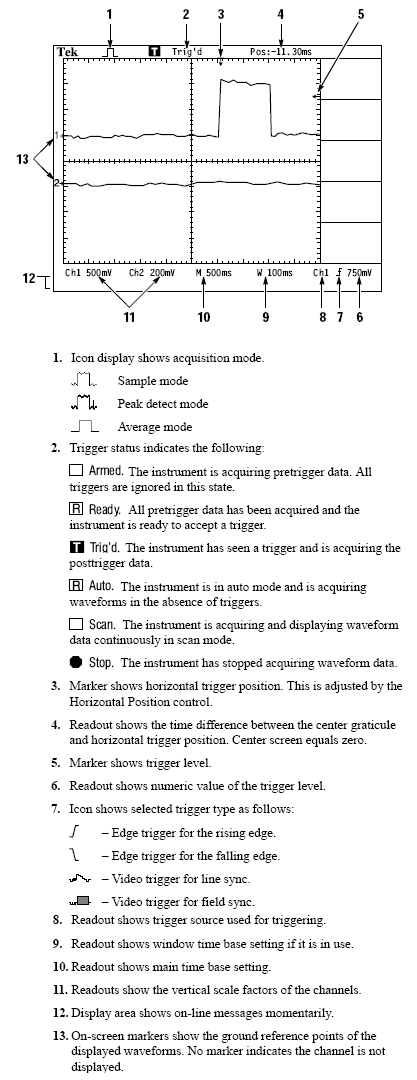Difference between revisions of "Tektronix TDS220 Oscilloscope"
m (→Triggering) |
m (→The Display) |
||
| Line 4: | Line 4: | ||
The display shows a lot of information. The diagram below describes all of the visual indicators available on the display: |
The display shows a lot of information. The diagram below describes all of the visual indicators available on the display: |
||
[[image: |
[[image:oscilliscope display description.png|center]] |
||
When acquiring a signal, it may appear differently depending on the settings of the oscilliscope. The diagram below describes the different bahaviors: |
When acquiring a signal, it may appear differently depending on the settings of the oscilliscope. The diagram below describes the different bahaviors: |
||
Revision as of 11:29, 3 July 2006
Basic Operation
The Display
The display shows a lot of information. The diagram below describes all of the visual indicators available on the display:
When acquiring a signal, it may appear differently depending on the settings of the oscilliscope. The diagram below describes the different bahaviors:
Triggering
The trigger determines when the oscilloscope starts to acquire data and display a waveform. When a trigger is set up properly, it can convert unstable displays or blank screens into meaningful waveforms.
When the oscilloscope starts to acquire a waveform, it collects enough data so that it can draw the waveform to the left of the trigger point. The oscilloscope continues to acquire data while waiting for the trigger condition to occur. After it detects a trigger, the oscilloscope continues to acquire enough data so that it can draw the waveform to the right of the trigger point.

